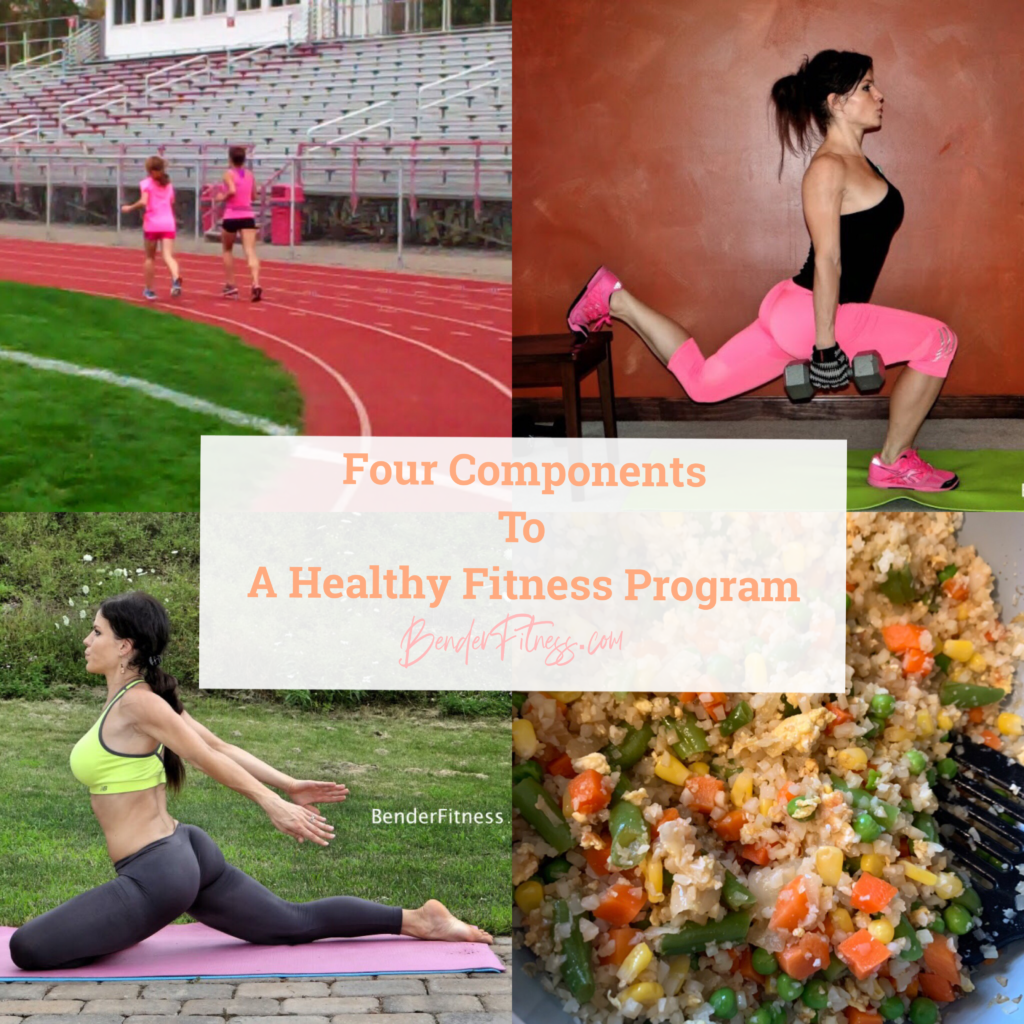It’s no secret that people enjoy the things that they are good at. It’s rewarding to do something successfully. It motivates us to continue.
While this motivation can be a wonderful thing, sometimes this tendency translates into habits that sabotage our overall health and fitness. We focus on the thing we are good (or want to improve) at, while neglecting other (equally important!) areas of our fitness.
For example, I often see runners (ahem, my husband) who are amazing at their sport. Their cardiovascular health, endurance and speed is phenomenal, but they risk injury by neglecting their flexibility.
When Ego Joins the Party: It’s not just the habit of doing things we are good at. Sometimes the ego gets involved. Ego driven exercise isn’t focused on the healthiest outcomes. I am not immune to Ego driven exercise practices (awareness is the first step toward change.) I am much more flexible on the left side of my body. When I practice splits I love practicing on that side. My right side is not even close to as flexible, and I hate practicing on this side. Practice feels futile, because I never seem to get any closer to achieving my goal.
That leaves me with a choice: continue to focus practicing on my left side because I am so close, or focus on my right side, which really needs the work. The truth is that one pursuit is focused on ego. The other pursuit is focused on creating balance in my body.
So what do I do? I continue to practice both, but I still enjoy practicing on my better side. I should be giving my difficult areas extra attention, but I’m a little bit too focused on the end goal. My pursuit of health and fitness, still has some ego in it. I’m working on it.
So here’s a secret about fitness, and life in general, it’s not always about the end goal. If your fitness is limited by deadlines and achievements, it’s going to be very difficult to continue to pursue a healthy life. What happens when you check all of those boxes, or if you aren’t progressing fast enough to check any of the boxes? Health and Fitness are a continuum of care. It’s great to train toward a specific goal, but the greater goal is training toward a healthier more balanced life.
There are four primary components to a healthy physical body:
- Cardiovascular Endurance
- Strength
- Flexibility
- Nutrition
A program that is focused on your overall health and wellness will include all four of these areas.
Cardiovascular Activities train your body to more efficiently take in oxygen, and deliver it to your body. Having a strong cardio base is a sign that your lungs, heart and your entire pulmonary system are working well. Your body needs oxygen for everything that it does. Regular cardiovascular training helps maximize the function of your Respiratory System.
Cardiovascular training doesn’t just mean running. Cardio can include HIIT, Cycling, Running, Walking, Rowing, Swimming, Spinning and more.
Strength training is great for your muscles, but it also helps protect your bones. When you lift weights or complete resistance training, the pressure on your bones stimulates them to maintain higher bone density. Muscle Mass is also great for your metabolism. Muscle is what gives your body shape and allows you to move . You want to develop both muscular strength and muscular endurance to maximize the health benefits of strength training.
Don’t be afraid to add resistance training into your routine. Aim to use a weight that is heavy enough to make the last two reps of each exercise difficult to complete. You should be able to complete the whole set with good form.
Flexibility training protects your range of motion. Every area of our body has a different capacity for range of motion. Bottom line, flexibility is mobility. If you are not flexible that means that you are immobile in some area of your body. It’s sounds scarier when you say it that way, but it’s very important. Appropriate flexibility protects your range of motion, and your biomechanics. If one area of your body is immobile, that means other areas have to pick up the slack and perform functions they aren’t meant to. It’s a recipe for injury.
If you aren’t already incorporating stretching and flexibility training into your routine, start adding it to your program. Yoga, Pilates, or general stretching are some great options.
Nutrition nurtures your body with all the vitamins, minerals, and macro nutrients it needs. Calories are energy. When you properly fuel your body it feels better, and your energy is better. Pay attention to the way food makes you feel, and how your body responds. Focus on eating a lots of colorful fruits and vegetables, lean proteins, and whole grains. The more of your foods that you are consuming in their whole state (minimally processed) the better your body will feel.
Review your fitness program. Are you incorporating each of these areas into your training? If not, it’s time to modify your program. It’s fantastic to train for specific goals, but make sure those goals are adding to your overall health and life satisfaction.

